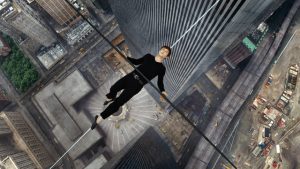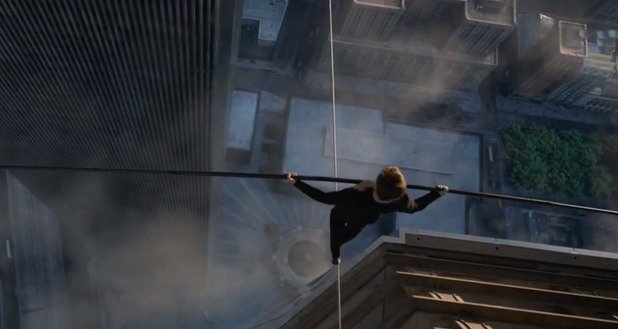The tightrope walker Philippe Petite is standing on a lifelong dream. On a wire tied between two of the tallest buildings in the world. In an impromptu performance, he decides to walk up and down the wire, instead of walking across once. And getting done with the nearly-suicidal act. He’s walking his dream. And the walk gently transforms into a beautiful dance performance. Beethovan’s ‘Fur Elise‘ plays in the background. It’s breathtaking. It’s surreal. Philippe’s lanky figure on the thin wire, set against the endless skyline of New York. And the music, flowing like a dream.

the-walk
*****
For those who have watched James Marsh’s Oscar and Bafta–winning 2008 documentary Man On A Wire, based on Philippe’s life, the plot of The Walk offers no surprises. But what makes this a beautiful experience is Zemeckis’ masterful direction. Like Philippe, he too refuses to call the act a circus. It takes the shape of a ballet or mime performance. Using the screen like a stage, he simply lets Gordon Levitt, the perfect showman, do what he does best. Perform and charm the audience. In sequences where Philippe and his gang prepare for the illegal and dangerous stunt, the mood is utterly grave and tense. As if they’re preparing for a heist, or a conspiracy. Philippe sneaks into the buildings in different costumes each day. Takes snaps of the towers from different angles. And makes endless notes. What might have looked like madness is treated with respect. To this, add perfect and seamless visuals. And thrilling 3D effects.
*****

thewalk1
When he’s on the wire, he ceases to see the world around him. His focus is driven towards himself, and the wire.
The film too, refuses to spend time on anything but Philippe’s mission. It’s well-focused and precise. Philippe befriends a number of people in New York, who agree to help him with the stunt performance. What do we know about them? Just their names. One of Philippe’s loyal accomplices is a photographer he met in Paris. We don’t know why he risks his life, and everything else, for this wire walker. There’s also a mathematics teacher, a Frenchman who suffers from vertigo. Who goes all out to help Philippe achieve his dream. When Annie, Philippe’s loyal girlfriend, bids him goodbye, there’s no melancholic drama. The Walk, as its title suggests, is about Philippe’s phenomenal walk. And nothing else.
*****
The Walk Review is a Silverscreen original article. It was not paid for or commissioned by anyone associated with the movie. Silverscreen.in and its writers do not have an advertising relationship with movies that are reviewed on the site.



